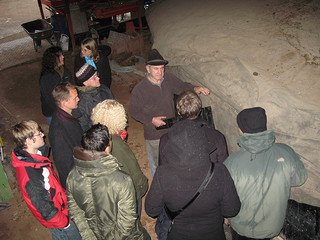Beyond the Grid: Distributed Generation using Renewables
By: Amos S. Eno
Posted on:04/05/2012Helping Rural Residents to Make Alternative Energy Sources a Reality
“We believe the next phase of the business cycle in implementing renewables as an alternative to fossil fuels will be at the agricultural community, commercial, industrial and municipal levels. In many cases, these will be smaller projects that make up what is called ‘distributed generation.’ We will be building our power generation right at the site where it will be used. To effectively implement these smaller scale technologies such as wind turbines and solar panels, the outmoded WWII era power distribution grid must be updated.”
That’s Bob Belick, chemical engineer, businessman and co-founder of Sustainable Strategies, operating out of St. Charles, IL. He’s talking about the results of nearly two years of learning as much as possible about the marketplace of renewable energy prior to his business launch. Sustainable Strategies specializes in four types of renewables: photovoltaic (PV) solar for electricity, PV solar thermal, wind, and waste to energy, which includes bio-digestion and anaerobic digestion.
Rural Areas Pay More for Power
According to Bob, rural areas in the Midwest pay a higher per unit energy price for power for a variety of reasons. They are generally located farthest from the grid, and typically 15% of energy is lost when transmitted over distance. Increasingly, rural o perators are setting up electric co-ops to buy big chunks of power from generators and distribute it on a cost plus basis. It’s a short step from there to a decision to create your own energy.
perators are setting up electric co-ops to buy big chunks of power from generators and distribute it on a cost plus basis. It’s a short step from there to a decision to create your own energy.
Bob predicts that the agricultural industry will have success over the next three years making more investments in sustainable operations such as waste to energy. In particular, Bob sees this trend in “legacy farms” - those still operated by the owners and passed down through the generations.
Renewable Energy Standards and Credits
Another motivator in developing clean energy is the Renewable Energy Standard, which is mandatory in 23 states and voluntary in 6. Problem is, the standard varies quite a bit. For example, CA requires that by 2020, 33% of its energy must come from renewable sources. In Illinois, the mandate is 20% by 2020.
The use of Renewable Energy Credits, or RECs, allows small, innovative adopters to support this transition for large utilities that lack the infrastructure to do so themselves. It works like this: for every megawatt of renewable energy (regardless of the technology) generated by anyone, a Renewable Energy Credit or REC is generated. That REC can then be sold to a large utility like Exelon in Illinois, which contributes to meeting its renewable mandate.
“Cities are beginning to take advantage of these credits using innovative programs,” explains Bob. “For example, the city of Milwaukee is installing a digester for animal waste, but they have developed arrangements with restaurants/food processors to add their leftovers to the waste stream because all those veggies boost microbial activity!”
Feedback
re: Beyond the Grid: Distributed Generation using RenewablesBy: Great concept on: 04/06/2012Hello Amos, our company Rocky Mountain Enterprises, Inc. has developed the perfect product for Renewable generation. It has been a great success for rural farmers and ranchers here in New Mexico. Our product the Personal Power Plant is a hybrid, PV , Wind system. It is the best of both worlds, and makes the most of the natural resources available at each location. Take a look at our website for more info, or email me. www.thePersonalPowerPlant.com
 Sign In
Sign In
 Sign In
Sign In
